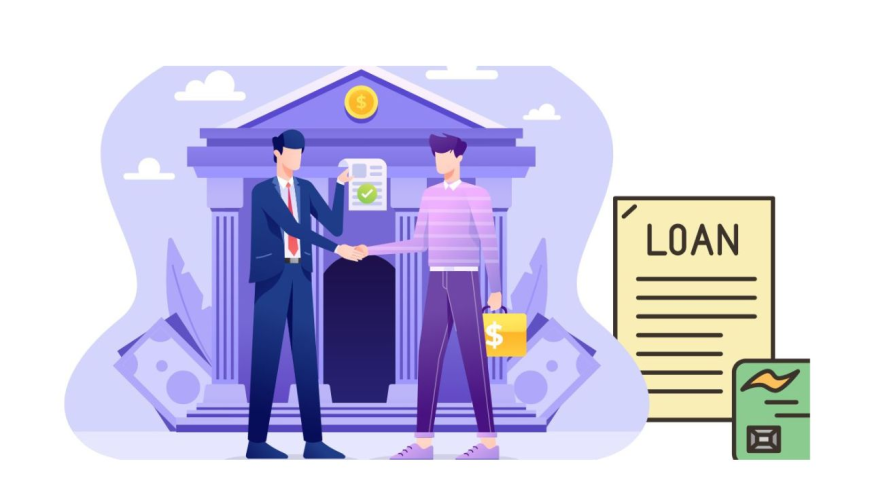Everything You Need to Know About Instant Personal Loan Rates

In this blog, we’ll dive into everything you need to know about instant personal loan rates, from what they are to how they’re determined and tips on securing the best rate.
What Are Instant Personal Loan Rates?
An instant personal loan rate is the interest rate charged by lenders when you borrow money.
This rate is the cost of borrowing and can significantly impact the total amount you’ll repay. Personal loan rates typically come in two forms:
-
Fixed Rate: With a fixed-rate loan, your interest rate remains the same throughout the term of the loan. This predictability can help you plan your budget and ensure you aren’t surprised by fluctuating payments.
-
Variable Rate: A variable-rate loan has an interest rate that can change over time based on market conditions. While this may start with a lower rate, it’s important to understand that the rate could increase, making future payments higher.
Factors That Affect Instant Personal Loan Rates
The rate you’re offered on an instant personal loan depends on various factors, some of which are within your control. Understanding these factors can help you improve your chances of securing a competitive rate.
1. Your Credit Score
One of the most significant factors affecting your personal loan rate is your credit score. Lenders view your credit score as an indicator of your ability to repay the loan.
A higher credit score (typically 700 or above) means you’re a lower risk to lenders, and as a result, you’re more likely to receive a lower interest rate. On the other hand, a lower credit score may lead to higher interest rates or even loan rejection.
2. Loan Amount and Term
The amount you borrow and the length of time you’ll take to repay the loan also influence the rate.
Generally, smaller loan amounts may come with higher interest rates, while larger loans may offer lower rates. Similarly, shorter loan terms typically come with lower interest rates because they pose less risk to the lender.
A longer loan term, while spreading out your repayments, may come with a higher rate.
3. Income and Debt-to-Income Ratio
Lenders assess your income to ensure you can afford the loan. They may also review your debt-to-income (DTI) ratio, which is the proportion of your monthly income that goes toward debt repayments.
A lower DTI ratio indicates that you’re more capable of handling additional debt and may result in a better rate. If your DTI ratio is high, lenders might consider you a higher risk and charge a higher interest rate.
4. Lender Type
Different lenders offer different rates, and these can vary widely. Banks and credit unions may offer lower rates but often have stricter eligibility criteria.
On the other hand, online lenders and peer-to-peer platforms may offer higher rates, but the approval process can be more lenient, and you may receive your funds more quickly.
How to Compare Instant Personal Loan Rates
When searching for an instant personal loan, comparing rates is crucial to ensure you’re getting the best deal. Here are some tips for comparing rates effectively:
-
Use Online Comparison Tools: Many financial websites allow you to compare personal loan rates from various lenders. These tools can help you quickly identify competitive rates and better understand what you can expect based on your credit profile.
-
Check for Fees: While interest rates are the most obvious cost of borrowing, it’s essential to look at any additional fees. Some lenders charge origination fees, prepayment penalties, or late payment fees. When comparing rates, consider these additional costs to get a clearer picture of the total cost of the loan.
-
Pre-Qualification: Some lenders offer pre-qualification processes, where you can get an estimate of the rate you’ll receive without affecting your credit score. This is a great way to compare loan offers before submitting a formal application.
-
Consider Loan Term: Shorter loan terms often come with lower interest rates, but they also mean higher monthly payments. Choose a loan term that fits your budget while still allowing you to pay off the loan in a timely manner.
How to Secure the Best Instant Personal Loan Rate
While some factors affecting your loan rate are beyond your control, there are several ways you can improve your chances of securing a lower rate:
-
Improve Your Credit Score: If you have time before applying for a loan, work on improving your credit score. Pay off outstanding debts, keep credit card balances low, and dispute any errors on your credit report to boost your score.
-
Shop Around: Don’t settle for the first loan offer you receive. Take the time to compare rates from multiple lenders and choose the one that offers the best combination of rates, fees, and loan terms.
-
Opt for a Shorter Loan Term: If you can afford higher monthly payments, consider opting for a shorter loan term. Lenders often offer lower interest rates for loans with shorter repayment periods.
-
Consider a Co-Signer: If your credit is less than stellar, consider asking a family member or friend with a strong credit history to co-sign the loan. This can improve your chances of qualifying for a better rate.
Conclusion
Understanding instant personal loan rates is crucial for making an informed borrowing decision.
By knowing what factors affect the rate, how to compare different offers, and how to secure the best rate, you can ensure that you’re getting the most cost-effective loan for your needs.
Remember, the lowest rate isn’t always the best option—take the time to review all terms and fees before committing to any loan. With careful planning and research, an instant personal loan can be a powerful tool to help you navigate your financial challenges.


 lucky08
lucky08 

